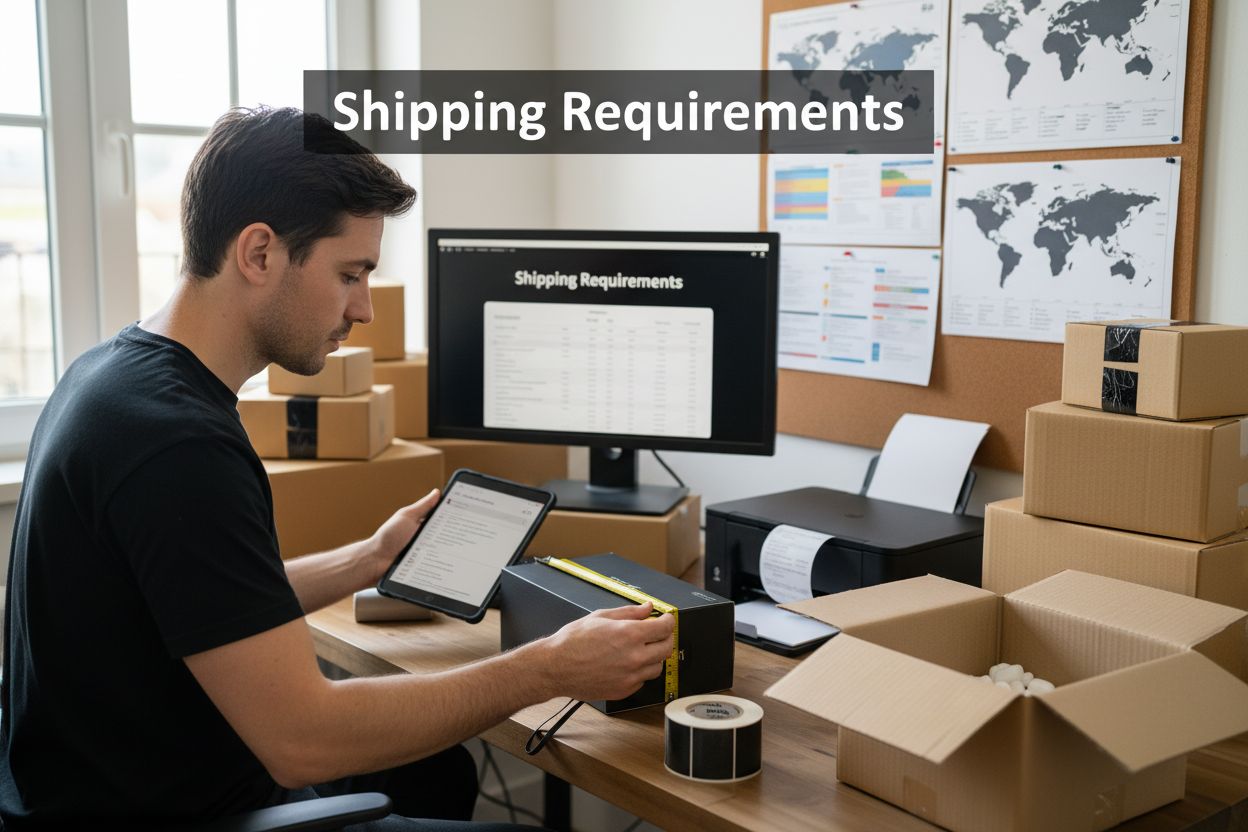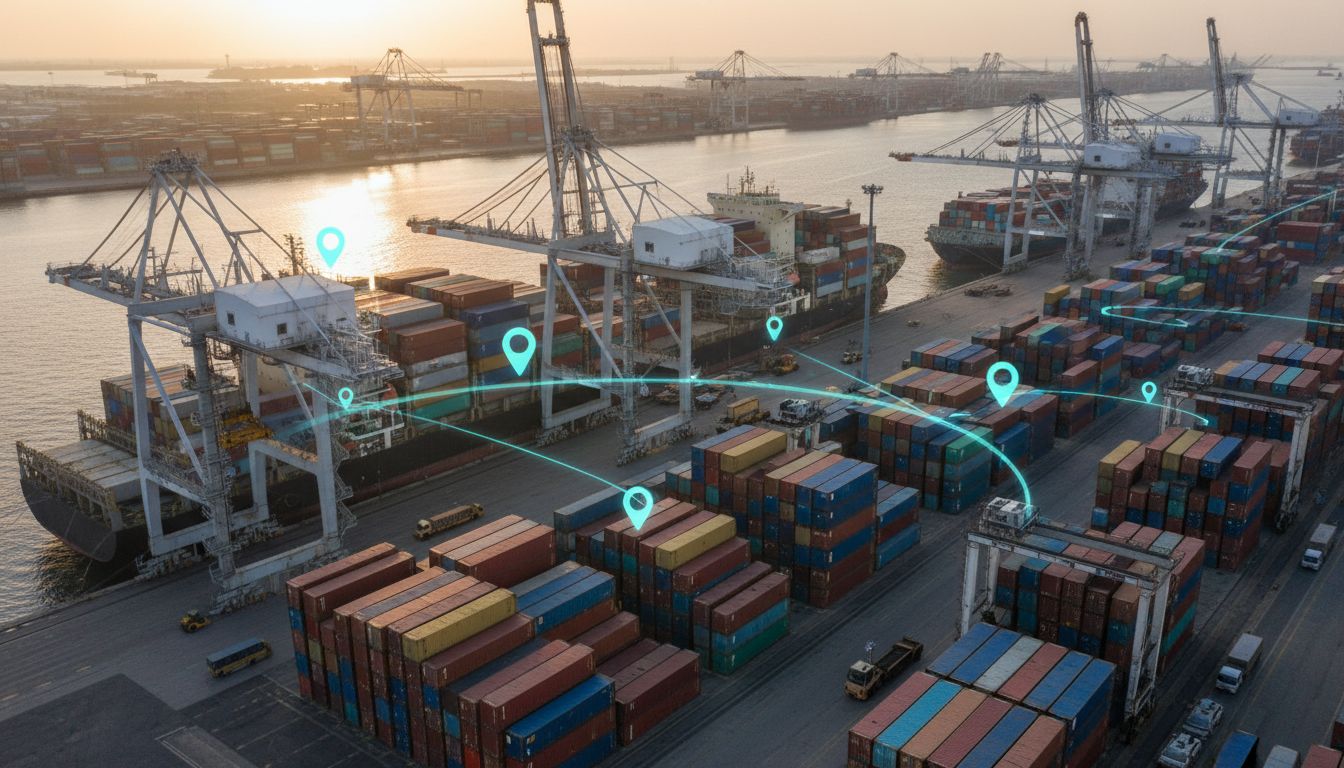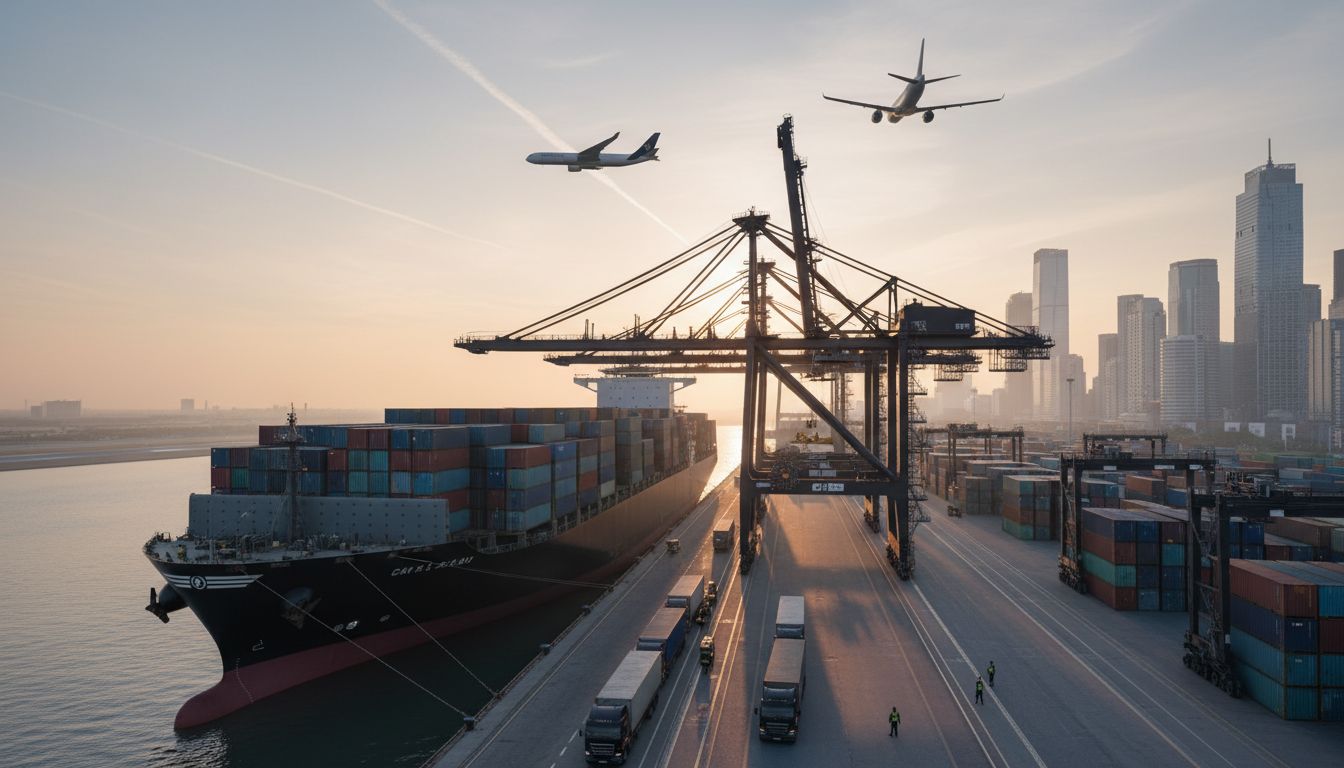International ecommerce shipping can look overwhelming at first. There are endless rules, high costs, and every country seems to ask for different paperwork. Yet here is what is surprising. Product characteristics will dramatically influence your shipping approach far more than any border crossing or distance on the map. The real secret to smooth international shipping does not start at customs or even at the carrier’s door. It starts when you truly understand the unique requirements of what you are actually sending.
Table of Contents
- Step 1: Assess Your Shipping Requirements
- Step 2: Select Reliable Shipping Partners
- Step 3: Prepare Accurate Shipping Documentation
- Step 4: Implement Efficient Tracking Systems
- Step 5: Verify Delivery Success And Compliance
Quick Summary
| Key Point | Explanation |
|---|---|
| 1. Assess your shipping requirements | Evaluate product details and regulations to guide your shipping strategy effectively. |
| 2. Choose reliable shipping partners | Assess carriers based on coverage, reliability, and expertise for optimal shipping performance. |
| 3. Prepare accurate shipping documentation | Ensure all paperwork is precise to avoid delays and compliance issues during shipping. |
| 4. Implement efficient tracking systems | Use advanced tracking solutions for real-time visibility and proactive communications with customers. |
| 5. Verify delivery success and compliance | Regularly review shipping performance and compliance to enhance efficiency and customer satisfaction. |
Step 1: Assess Your Shipping Requirements
Successful ecommerce international shipping begins with a comprehensive assessment of your specific shipping requirements. This crucial first step determines the foundation of your entire international logistics strategy, helping you navigate the complex landscape of global trade with precision and confidence.
Start by conducting a detailed evaluation of the products you intend to ship internationally. Product characteristics will dramatically influence your shipping approach. Consider the physical attributes like weight, dimensions, fragility, and potential regulatory restrictions. A delicate electronics component requires dramatically different shipping protocols compared to clothing or non-perishable goods. You will need to measure and document exact product specifications, understanding how these factors impact packaging, handling, and transportation costs.
Next, research the specific import regulations and customs requirements for each target country. Different nations have unique restrictions, documentation needs, and potential tariff complications. Some countries impose strict regulations on specific product categories, requiring specialized permits or certifications. Check our guide on international freight shipping to understand these nuanced requirements. You might discover that certain products require additional documentation, advanced clearance, or even face complete import restrictions.
Carefully analyze your target markets global shipping zones, understanding how distance and destination will influence shipping expenses and delivery timelines. Countries within closer proximity typically offer more economical and faster shipping options compared to distant international destinations. Evaluate potential shipping carriers and their specific international service offerings, comparing their capabilities, reliability, tracking systems, and pricing structures. Some carriers specialize in specific regions or product types, making them more suitable for your unique shipping needs.
Verify your readiness by creating a comprehensive shipping requirements checklist:
- Complete product specification documentation
- Identify all target international markets
- Research specific country import regulations
- Determine appropriate shipping carrier options
- Calculate estimated shipping costs and potential tariffs
By methodically assessing your shipping requirements, you establish a solid groundwork for successful international ecommerce shipping strategies that minimize risks and maximize operational efficiency.
Step 2: Select Reliable Shipping Partners
Choosing the right shipping partners represents a critical decision that can make or break your international ecommerce shipping strategy. Your selected carriers will directly impact delivery speed, cost efficiency, package safety, and overall customer satisfaction. Not all shipping partners are created equal, and finding the ideal match requires strategic evaluation.
Begin by conducting a comprehensive assessment of potential international shipping carriers. Look beyond surface level pricing and examine their global network coverage, reliability record, and specialized expertise in your specific product categories and target markets. Multinational carriers like FedEx, UPS, and DHL offer extensive international reach, but regional carriers might provide more cost effective solutions for specific geographic zones. Explore our strategies for reducing shipping costs to understand how carrier selection impacts your bottom line.
Perform detailed due diligence on each potential shipping partner. Request comprehensive rate sheets, understand their tracking capabilities, insurance options, and handling procedures for different product types. Pay close attention to their customs clearance processes, as smooth documentation and compliance can significantly reduce potential shipping delays. Some carriers specialize in particular industries or product categories, offering tailored solutions that generic providers cannot match.
Evaluate carrier performance through multiple critical lenses:
- Shipping rates and potential volume discounts
- Global network coverage and delivery speed
- Package tracking and customer communication systems
- Customs clearance expertise
- Claims and insurance processing
- Customer support responsiveness
Consider establishing relationships with multiple shipping partners to create a robust, flexible shipping ecosystem. This strategy allows you to optimize routes, manage costs, and maintain consistent service levels even if one carrier experiences temporary challenges. Some businesses rotate carriers based on destination, product type, or seasonal demand, maximizing efficiency and minimizing shipping expenses.
Final verification involves running small test shipments with potential carriers, meticulously tracking performance metrics like delivery time, package condition, and overall reliability.
The following table summarizes key criteria to compare and evaluate potential international shipping carriers, helping you choose the best partner for your business needs.
| Criteria | What to Look For |
|---|---|
| Shipping Rates | Compare costs, discounts for volume, and surcharges |
| Global Network Coverage | Assess international reach and regional expertise |
| Delivery Speed | Evaluate standard transit times for target destinations |
| Tracking & Communication | Review tracking technology and customer update options |
| Customs Clearance Expertise | Determine efficiency in handling documentation and resolving border issues |
| Insurance & Claims Process | Analyze shipment protection policies and claims responsiveness |
| Customer Support | Check responsiveness, expertise, and availability of service teams |
By systematically evaluating and selecting shipping partners, you create a strong foundation for successful international ecommerce shipping operations.
Step 3: Prepare Accurate Shipping Documentation
Accurate shipping documentation forms the backbone of successful international ecommerce shipping, serving as the critical communication bridge between exporters, importers, customs officials, and shipping carriers. Documentation errors can result in significant delays, financial penalties, and potential shipment seizures, making this step absolutely crucial to your international trade strategy.
Begin by creating a comprehensive documentation package that addresses the specific requirements of your destination country. Explore our comprehensive guide to export shipping documentation to understand the intricate details of international paperwork. Commercial invoices must include precise product descriptions, harmonized tariff codes, exact product values, and comprehensive sender and recipient information. These documents should be meticulously completed, leaving no room for ambiguity or interpretation that could trigger customs scrutiny.
Understand that different product categories and destination countries require unique documentation sets. Electronics, pharmaceutical products, and agricultural goods often demand additional certifications, permits, and specialized declarations. Some countries require certificates of origin, proving where the product was manufactured, while others might mandate specific health or safety certifications. Your documentation must not only be accurate but also tailored to the specific regulatory landscape of each target market.
Prepare a comprehensive documentation verification checklist to ensure nothing is overlooked:
- Completed commercial invoice with precise product details
- Certificate of origin
- Accurate harmonized tariff classification codes
- Detailed packing list
- Any required export licenses or special permits
- Insurance and value declarations
Consider investing in digital documentation management tools that can help standardize and streamline your international shipping paperwork. These platforms can automatically generate required forms, cross-reference regulatory requirements, and flag potential documentation issues before shipment. Many modern solutions integrate directly with customs databases, providing real-time updates on documentation standards and potential compliance challenges.
Final verification involves a systematic review of all documents, cross-checking information for consistency and completeness.
Below is a checklist table summarizing the essential steps for preparing accurate international shipping documentation, helping to ensure nothing is overlooked during shipping preparations.
| Documentation Step | Description |
|---|---|
| Commercial Invoice | Contains detailed product description, value, sender, and recipient |
| Certificate of Origin | Certifies where the goods were manufactured |
| Harmonized Tariff Codes | Assigns precise customs codes to each product |
| Packing List | Outlines product quantities, sizes, and packaging details |
| Export Licenses or Special Permits | Required for controlled or sensitive product categories |
| Insurance and Value Declarations | Documents the insured value for coverage purposes |
| Consistency Review and Signature | Ensures all documents are accurate, complete, and properly signed |
Step 4: Implement Efficient Tracking Systems
Effective international shipping tracking transforms the complex logistics process into a transparent, manageable experience for both businesses and customers. Real-time shipment visibility has become a fundamental expectation in global ecommerce, making robust tracking systems a critical competitive advantage.
Begin by selecting comprehensive tracking solutions that provide end-to-end visibility across multiple carriers and international transit points. Modern tracking platforms integrate advanced technologies like GPS, RFID, and cloud-based reporting systems that offer granular insights into shipment location, estimated delivery times, and potential transit challenges. Learn more about our expedited shipping strategies to understand how tracking technologies can optimize your shipping performance.
Implement a multi-layered tracking approach that combines carrier-provided tracking, internal logistics management systems, and customer communication protocols. Your tracking strategy should not just monitor shipment movement but also proactively identify and address potential disruptions. This means establishing automated alert systems that notify you and your customers about significant transit events, customs clearance progress, and potential delivery complications.
Consider the essential components of an effective tracking ecosystem:
- Real-time GPS location monitoring
- Automated customs clearance updates
- Predictive delay analysis
- Integrated carrier communication channels
- Comprehensive shipment history records
- Customer notification mechanisms
Invest in tracking technologies that offer API integration capabilities, allowing seamless data exchange between your ecommerce platform, shipping carriers, and customer interface. These integrations enable automatic updates, reduce manual tracking efforts, and provide a consistent, professional communication experience. Advanced tracking systems can generate detailed analytics, helping you continuously refine shipping routes, carrier selections, and overall logistics strategies.
Final verification involves conducting test shipments across different routes and carriers, meticulously documenting the tracking experience from initiation to delivery. Assess the system’s accuracy, speed of updates, and ease of use from both operational and customer perspectives. By treating tracking as a strategic tool rather than a passive monitoring process, you transform international shipping from a logistical challenge into a seamless, transparent customer experience.
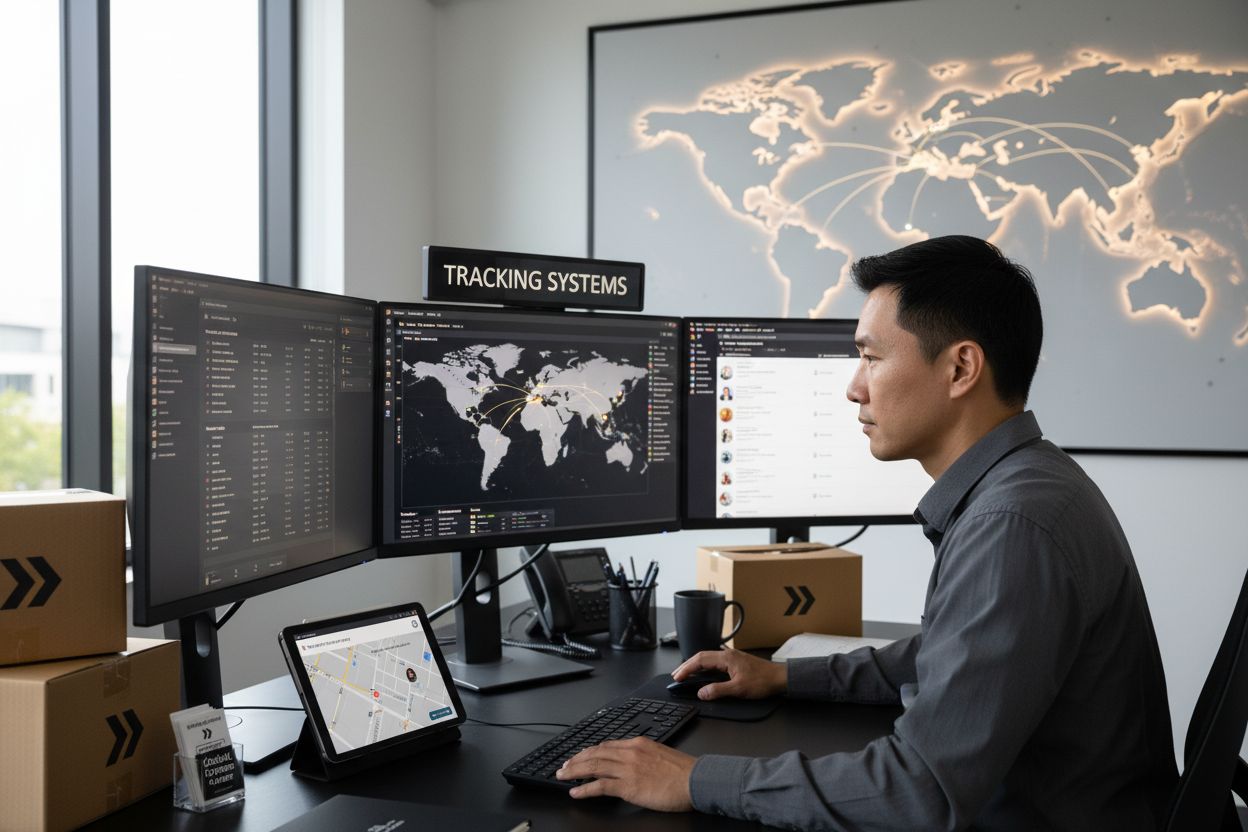
Step 5: Verify Delivery Success and Compliance
The final stage of international ecommerce shipping involves comprehensive delivery verification and regulatory compliance assessment. This critical step ensures that your shipping process not only delivers packages successfully but also adheres to complex international trade regulations. By implementing rigorous verification protocols, you protect your business from potential legal complications and maintain customer satisfaction.
Begin by developing a systematic post-delivery review process that examines every aspect of the international shipping journey. Explore our expert strategies for export documentation to understand the nuanced compliance requirements. Your verification process should include detailed analysis of delivery confirmation, package condition, customs clearance documentation, and adherence to destination country import regulations.
Create a comprehensive performance evaluation framework that goes beyond simple delivery confirmation. Analyze key metrics such as delivery time accuracy, package integrity, customs processing duration, and total shipping costs. This approach transforms delivery verification from a reactive process into a proactive strategy for continuous logistics improvement. Pay special attention to instances of delivery challenges, customs delays, or documentation discrepancies, using these insights to refine future shipping procedures.
Establish a robust compliance verification checklist that covers multiple critical dimensions:
- Complete delivery confirmation documentation
- Verification of customs clearance processes
- Assessment of package condition upon arrival
- Review of total shipping expenses versus initial estimates
- Analysis of carrier performance metrics
- Documentation of any regulatory compliance issues
Implement a feedback loop that connects your delivery verification process with customer service and logistics planning teams. This integrated approach allows you to capture granular insights about international shipping performance, identifying potential systemic issues before they become significant problems. Advanced businesses utilize machine learning and data analytics tools to predict and mitigate future shipping challenges based on historical verification data.
Final verification requires a holistic review that extends beyond individual shipments. Conduct quarterly comprehensive assessments of your international shipping performance, examining aggregate data to identify trends, optimize carrier selections, and continuously refine your global logistics strategy. By treating delivery verification as an ongoing improvement process, you transform international shipping from a transactional service into a strategic competitive advantage.
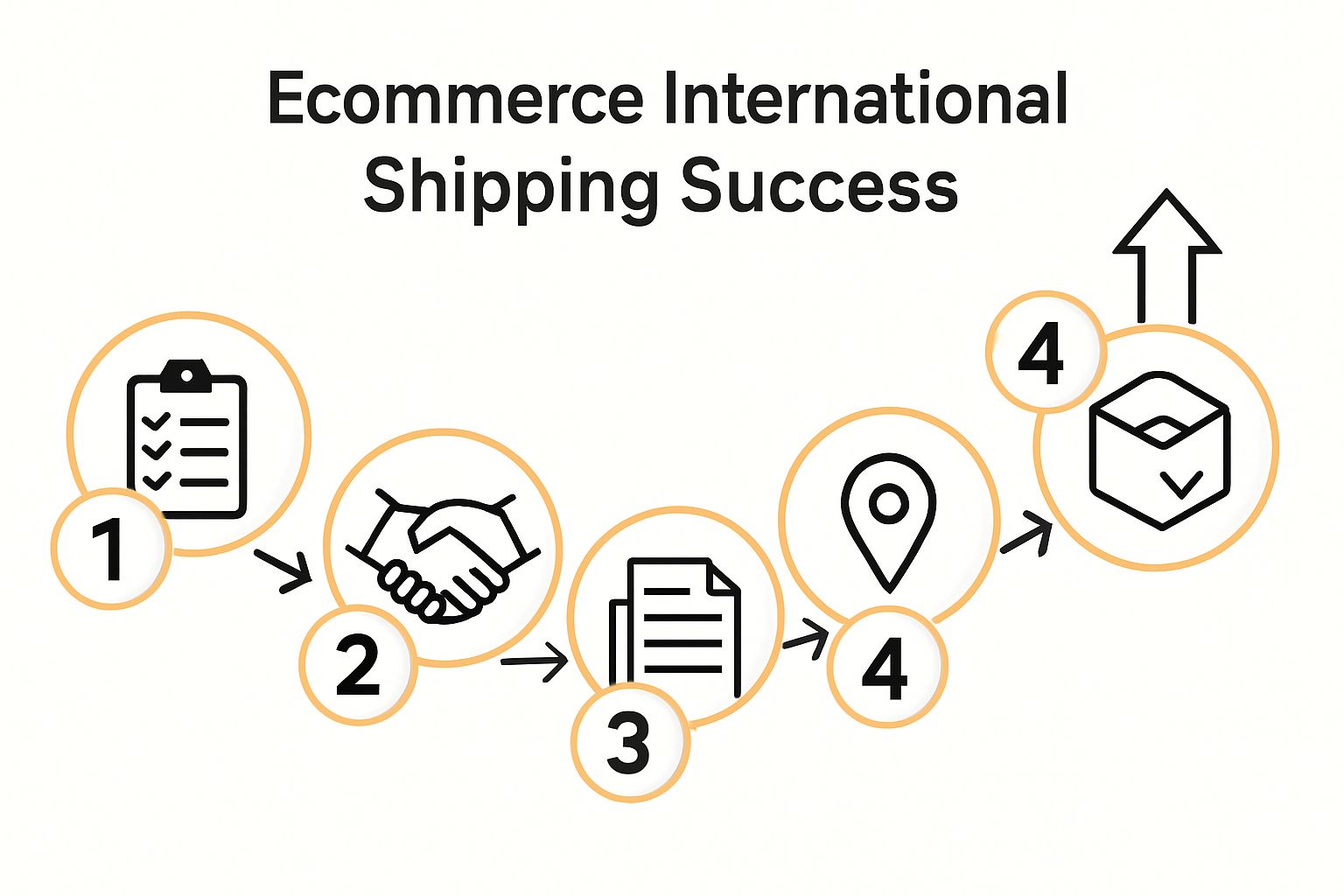
Ready for Effortless International Ecommerce Shipping?
You have just explored the five-step formula for mastering global ecommerce shipping, but turning these expert insights into real-world results can be overwhelming. Challenges like shipping compliance, accurate documentation, and reliable tracking are tough to handle alone. That’s where Worldwide Express, Inc. makes the difference. We bring years of experience helping businesses like yours simplify customs clearance, manage freight across borders, and protect shipments with tailored insurance and tracking solutions. Discover how our custom logistics solutions can eliminate stress and guarantee steady delivery to your customers worldwide.
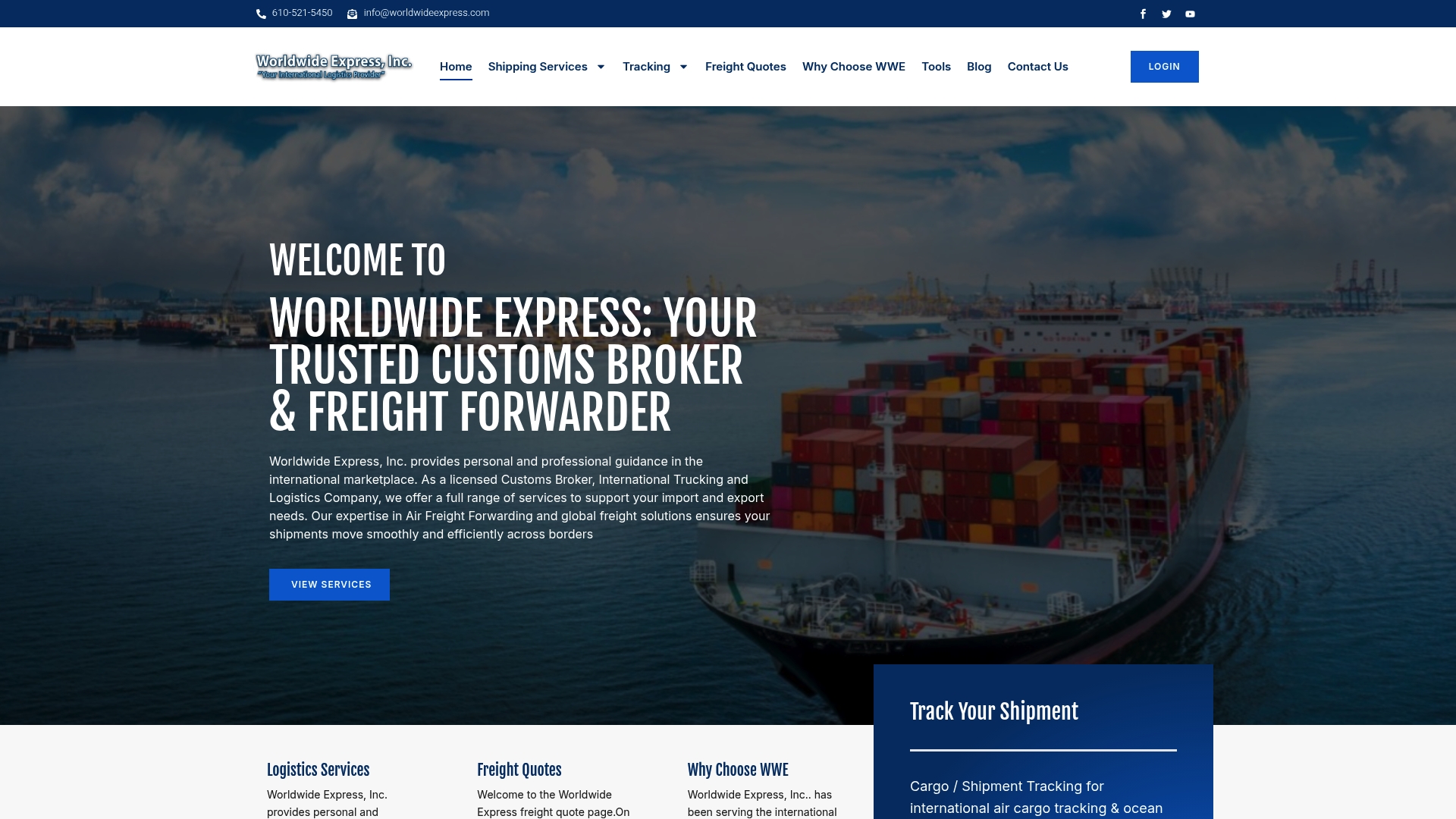
Why wait and risk costly errors or delays? Visit Worldwide Express, Inc. and connect with our professionals for a free consultation or a custom quote. You can also explore our ecommerce shipping resources for more tips. Take the next step toward smooth, secure, and scalable international ecommerce shipping today.
Frequently Asked Questions
What are the key steps to master ecommerce international shipping?
Successful international shipping includes five essential steps: assess your shipping requirements, select reliable shipping partners, prepare accurate shipping documentation, implement efficient tracking systems, and verify delivery success and compliance. Follow these steps systematically to create an effective international shipping strategy.
How do I determine my shipping requirements for international eCommerce?
Start by evaluating your products’ specifications, including weight, dimensions, and any regulatory restrictions. Create a checklist that includes product documentation, target markets, import regulations, and potential shipping carriers to streamline your assessment.
What should I look for in a reliable shipping partner?
When selecting a shipping partner, consider their global network coverage, reliability record, and expertise in your product category. Request rate sheets, customize your approach based on the destination, and compare carriers’ performance metrics to ensure you choose the best option for your needs.
How can I ensure my shipping documentation is accurate?
To prepare accurate shipping documentation, create a detailed package that includes a commercial invoice, harmonized tariff codes, and any necessary permits. Use a verification checklist to cross-check all required documents and ensure consistency before shipping.
What tracking systems should I implement for international shipping?
Implement comprehensive tracking solutions that provide real-time visibility throughout the shipping process. Choose systems that offer automated updates for customs clearance, delivery status, and shipment history to enhance transparency and customer communication.
How can I assess delivery success and compliance after shipment?
Develop a post-delivery review process that examines delivery confirmations, package conditions, and customs documentation. Create a compliance verification checklist to analyze performance metrics and identify areas for improvement, ensuring streamlined future shipping operations.
Recommended
- 7 Key Tips for Mastering Post Office International Shipping – Worldwide Express, Inc.
- Master International Freight Shipping for Successful Trade – Worldwide Express, Inc.
- Master the Export Documentation Process in 2025 – Worldwide Express, Inc.
- 7 Key Steps for Worldwide Expedited Shipping Success – Worldwide Express, Inc.

